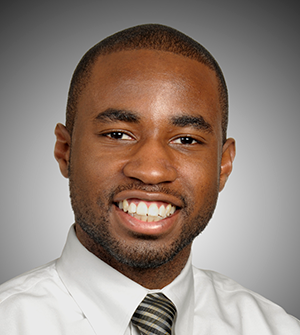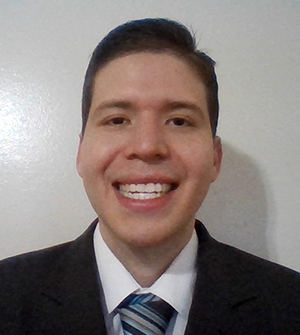The APS Bridge Program Celebrates its First Ph.D.s
By Leah Poffenberger
The APS Bridge Program was started in 2013 to address a shortage of Ph.D.s awarded to African American, Hispanic American, and Native American students. Only 6 percent of physics Ph.D.s awarded each year go to underrepresented minority groups, and the Bridge program has been working to promote institutional environments and mentoring to increase this number.
Two Bridge students, Tommy Boykin (University of Central Florida) and Kevin Galiano (The Ohio State University), are both set to receive their Ph.D.s in May, becoming the first Bridge participants to do so. Amid completing their dissertations, submitting conference proposals, and looking forward to the next step in their careers, Boykin and Galiano shared their journeys through academia and their experiences with the Bridge program.
Boykin, who graduated with a bachelor's degree from Berea College in 2013, has spent the past six years at the University of Central Florida, obtaining his master’s in 2016, and conducting research on biological physics. Galiano also graduated in 2013 from the Massachusetts Institute of Technology, taking his experience in condensed matter physics research to Ohio State (OSU), also receiving his Master’s in 2016. Now, soon to be equipped with newly minted Ph.D. degrees, Boykin and Galiano are both pursing career opportunities in industry.
Both credit the Bridge program with providing opportunities to pursue their passion for physics—and for Boykin, it was an especially important stepping stone to graduate school.

Tommy Boykin

Kevin Galiano
“I ended up applying to 12 different schools. I actually didn't get into any of them,” said Boykin. “One of my professors from Berea recommended I speak with Ted Hodapp [APS Senior Adviser to Education and Diversity], and he put me in touch with Dr. Talat Rahman [from UCF] who said that they were starting the Bridge Program and that I should apply. And so, I applied, I got in, and then I was actually admitted to UCF.”
Galiano found the Bridge Program though his academic advisor at MIT, and his application connected him to OSU, which turned out to be the perfect fit.
“One of the great things about Ohio State is how big its physics department is. What that means is they have a lot of opportunities, a lot of things one could pursue,” said Galiano. “I met Professor Jonathan Pelz and Professor Steven Ringel they were both interested in recruiting a student, and they introduced me to their research.”
The Bridge Program aims to help underrepresented minority students receive mentoring, have the opportunity for robust research opportunities, and obtain other support before applying to a doctoral program. Currently six Bridge sites, including UCF and OSU, have 167 enrolled Bridge students hoping to complete the program, gain entry into a doctoral program, and earn Ph.D.s in physics.
“Always be talking with someone, whether that's a mentor or an advisor; they can make sure you’re meeting certain benchmarks,” said Boykin, offering advice to future Bridge students. “I know for me, when I was going through my program, it was so helpful, especially the first time when I took my qualifier—I didn't pass. I talked with one of my mentors. She gave me a piece of cheesecake and said, ‘Hey, it's okay.’ Six months later, I passed.”
Boykin’s pursuit of a Ph.D. in physics started in high school after struggling at first, and slowly coming to enjoy his classes. He was inspired by his mother, who was working towards her own Ph.D. at the time, to take his education all the way. His current research on squid proteins with conductive properties that could be used in batteries also harkens back to a childhood fascination with electronics.
Galiano also found that his passion for physics in high school was a way to apply his love for mathematics.
“I enjoyed the mathematics, [so] when I took my physics class, I saw that I was good at it,” said Galiano. “I was granted [an APS Minority Scholarship], and I thought, okay, well I guess the best thing would be to pursue a physics career.”
At MIT and at OSU, Galiano has been studying traps in electronic materials—defects that cause things like cellphones to break down—through both experimentation and modeling.
Both Boykin and Galiano have successfully defended their dissertations and are looking for the next steps in their careers. “I want to make sure people know that grad school is hard,” said Boykin. “But my life motto is that I’m not willing to let anyone say what I can or cannot do.”
For more on the Bridge program, visit the web page.
©1995 - 2024, AMERICAN PHYSICAL SOCIETY
APS encourages the redistribution of the materials included in this newspaper provided that attribution to the source is noted and the materials are not truncated or changed.
Editor: David Voss
Staff Science Writer: Leah Poffenberger
Contributing Correspondent: Alaina G. Levine
Publication Designer and Production: Nancy Bennett-Karasik
May 2019 (Volume 28, Number 5)
Articles in this Issue

